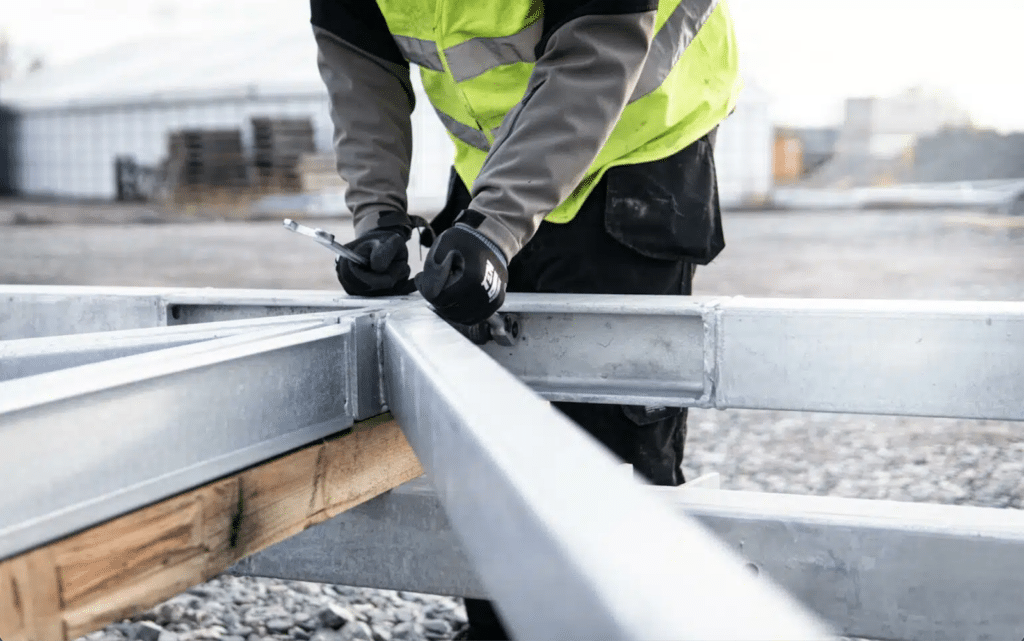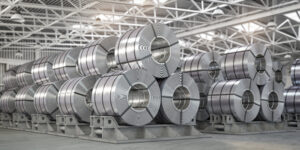Steel stands as a cornerstone of modern engineering, offering unmatched versatility and playing a vital role in shaping our world. Its applications across various industries underscore its significance and underline numerous benefits that have earned it a prime spot in construction projects.
In this post, let’s explore five key advantages of steel that’ll help you learn more about its reliability and what lies at the heart of Pacesetter’s vision.
1. Exceptional Strength and Durability
Steel’s remarkable strength-to-weight ratio positions it as one of the most robust construction materials. As of 2023, the global steel industry produces a staggering 1.9 billion metric tons of crude steel annually, highlighting its critical role (World Steel Association). This strength and durability allow engineers and architects to design structures capable of withstanding extreme weather conditions, seismic events, and heavy loads. Moreover, steel structures boast a longer lifespan than traditional materials, significantly reducing maintenance costs and enhancing sustainability.
2. Eco-Friendly and Sustainable
Sustainability lies at the heart of steel’s appeal, with its high recyclability and reuse potential. Presently, around 88% of steel from demolition is recycled and repurposed (Steel Recycling Institute). This exceptional recycling rate reduces the environmental footprint of steel production, conserves energy, minimizes waste, and preserves natural resources. The ability to recycle steel without compromising its quality aligns with sustainability goals, promoting a circular economy and reducing reliance on virgin materials.
3. Energy-Efficient and Cost-Effective
The energy efficiency of steel production has significantly improved, with a 61% reduction in energy intensity from 1960 to 2019 (World Steel Association). In construction, steel’s thermal properties enable the creation of energy-efficient buildings by enhancing insulation, leading to reduced heating and cooling costs. Additionally, the swift construction pace associated with steel translates to cost savings and shorter project durations, further bolstering its cost-effectiveness.
4. Design Flexibility and Versatility
Steel’s malleability allows architects and engineers to unleash their creativity, resulting in innovative and aesthetically pleasing structures. Utilizing modern advancements like Computer Numerical Control (CNC) technology, steel can be precisely shaped and molded, facilitating intricate and complex designs previously deemed challenging. This flexibility makes steel an ideal choice for a broad spectrum of projects, from commercial complexes to residential developments.
5. Safety and Reliability
Safety remains a paramount concern in construction, making steel’s inherent properties invaluable. Steel structures demonstrate high resilience to natural disasters, including earthquakes, hurricanes, and fires. As of 2023, steel’s reputation for stability and safety remains unshaken, underpinned by its ability to withstand extreme conditions. Additionally, steel is non-combustible, enhancing fire resistance—a critical attribute for both commercial and residential constructions.
In conclusion, steel’s unparalleled properties, encompassing strength, sustainability, cost-efficiency, design versatility, and safety, establish it as a foundational material in modern construction. The 2023 reports confirm steel’s enduring significance and suggest that ongoing advancements and a continued emphasis on sustainability will further cement its role in shaping the architecture and infrastructure of the future.
Here at Pacesetter, we think it’s clear why steel is to your advantage, and the world’s. These reasons are just the beginning!




